Hammer toe
Table of Contents
Description
Hammer toe deformity is a condition that affects one or more of the little toes, most commonly the second, third, or fourth toes. It is characterized by abnormal bending of the toe joints, resulting in a hammer or claw-like shape of the toe.
The condition usually begins with a milder form called “hammer toe,” in which the joint closest to the tip of the toe (the distal interphalangeal joint) is bent downward while the other joints remain straight. As the deformity progresses, it can develop into a “hammer finger” where both the middle and tip joints are bent, creating a hammer-like appearance.
Anatomy of a Hammertoe
The anatomy of the hammer toe involves the structures of the affected toe that contribute to the characteristic bending and deformity.
Toes:
Each toe except the big toe is made up of three bones called the toes. They are named as follows:
Proximal toe:
The bone closest to the foot.
Middle finger:
The second bone of the toe.
Distal phalanx:
The bone at the lid of the toe.
Metatarsophalangeal (MTP) joint:
This is the joint at the base of the toe where the metatarsal (the long bone of the foot) joins the next toe.
Proximal Interphalangeal (PIP) Joint:
This is the first joint of the toe, located between the proximal and middle toe.
Distal Interphalangeal (DIP) Joint:
This is the second joint of the toe, located between the middle and distal toe.
Hammer toe deformity affects the PIP joint and sometimes the DIP joint. The muscles and tendons that control the movement of the toe become unbalanced, causing the toe to bend into an abnormal position. Specific anatomy associated with hammer toe deformity may include:
Flexor Tendons:
The flexor tendons run along the bottom of the toes and help bend the toes down. In hammertoe deformities, the flexor tendons can stretch and pull the toe into a bent or down position.
Extensor tendons:
The extensor tendons run along the top of the toes and are responsible for straightening them. In hammertoe deformities, the extensor tendons may weaken or the tendons may tighten, causing the toe to bend downward.
Ligaments:
Several ligaments support the joints of the toe and help stabilize them during movement.
Sesamoid bones:
The big toe has two small sesamoid bones below the MTP joint that act as pulleys for the tendons. Other toes may have a single sesamoid bone. In hammertoe deformities, the sesamoid bones may shift or change in the toe due to the changed position.
Soft tissue structures:
The skin, nerves, blood vessels, and other soft tissues around the toe play a role in the development and progression of hammertoe deformity.
- It is important to note that hammer toe deformity can vary between individuals and the affected toes.
- The severity and characteristics of the deformity can also be affected by underlying causes, such as tight shoes, muscle imbalances, or structural problems in the foot.
- If you suspect you have a hammer toe or are experiencing foot problems, see a doctor or podiatrist for a thorough evaluation and appropriate treatment.
Causes of hammer toe
Hammertoes can develop due to a combination of internal and external factors. Internal factors refer to factors internal to the foot itself, such as muscle imbalances, while external factors are external influences that contribute to the development of the deformity. Here are some of the more common causes of hammertoes:
Foot structure:
- Some people are born with an inherited foot structure that makes them more susceptible to hammertoes. This can include a longer second toe or a relatively short metatarsal, which can cause an imbalance in the muscles and tendons of the toes.
Muscle imbalances:
- Imbalances in the muscles and tendons that control the toes can cause the toe to bend abnormally.
- When the flexor tendons (those that bend the toe) exceed the extensor tendons (those that straighten the toe), the result can be a hammertoe.
High heels and narrow shoes:
- Wearing high heels or shoes with narrow toes can put too much pressure on the toes and force them into a bent position.
- This is especially true for pointed toes or pointed-toe boxes that force the toes to close together.
Toe Length Difference:
If one toe is longer than the other, this can put more pressure and friction on it inside the shoe, leading to a hammer toe.
Trauma:
The usual alignment of the toe can be disturbed by a toe injury, such as a fracture or stub, which may result in the development of a hammer toe.
Arthritis:
Inflammatory joint diseases, such as rheumatoid arthritis, can cause joint deformities, including hammertoes.
Nerve or muscle conditions:
Certain nerve or muscle conditions, such as Charcot-Marie-Tooth disease, can weaken the muscles and cause hammertoes to develop.
Nerve damage:
Nerve damage or conditions that affect the nerves that control the toes can disrupt the normal alignment of the toes.
Diabetes:
Diabetic neuropathy, a complication of diabetes, can cause nerve damage in the feet, leading to muscle imbalances and toe deformities.
Age:
As you age, the soft tissues of your feet can lose elasticity, making them more susceptible to hammertoes.
- It is worth noting that hammertoes often develop due to a combination of these factors.
- In addition, the progression and severity of the deformity can vary from person to person.
- Early detection and intervention can help prevent the worsening of the condition and improve the chances of successful nonsurgical treatment.
- If you suspect you have a hammer toe or are experiencing foot problems, see a doctor or podiatrist for proper evaluation and appropriate treatment.
Epidemiology of hammertoe
Occurrence: Hammertoe is a relatively common condition, especially in older adults. It can affect both men and women, but some studies show that it may be slightly more common in women. The incidence tends to improve with age.
Age:
- Hammertoe can occur at any age, but it becomes more common as people get older.
- This is partly because aging is associated with changes in the structure of the foot and the development of conditions such as arthritis, which can contribute to the development of hammertoes.
Gender:
Some studies suggest that women may have a higher risk of developing hammertoes than men, possibly due to factors such as shoe choice and differences in foot anatomy.
Shoes:
- Tight, ill-fitting shoes, especially those with high heels or pointed toes, are a major risk factor for developing hammertoes.
- Occupational factors that require wearing inappropriate footwear for long periods of time may also increase the risk.
Underlying medical conditions:
Certain diseases, such as arthritis (both rheumatoid arthritis and osteoarthritis), diabetes, and nerve disease, can increase the likelihood of hammertoes.
Toes Affected:
Hammertoes can affect any of the smaller toes, but the second, third, and fourth toes are more common.
Risk Factors:
Factors that may increase the risk of developing hammertoes include genetics, family history, foot structure, toe length differences, and previous foot injuries.
Lifestyle and occupation:
- Certain occupations or activities that place repetitive stress on the toes, such as ballet dancing or occupations that involve prolonged standing or walking, may also increase the risk of developing hammertoes.
- It is important to note that the above data represent general trends and findings, and the exact prevalence and risk factors of hammertoe may vary between studies and populations.
- Additionally, as medical research progresses, new findings may emerge that may affect our understanding of the epidemiology of hammertoe.
- If you are concerned about hammertoes or foot problems, it is best to seek professional help from a healthcare provider or podiatrist for an accurate diagnosis and appropriate treatment.
Symptoms of hammer toe
Symptoms of hammertoe can vary depending on the severity of the deformity and individual factors. In the early stages, symptoms can be mild and easily managed, while advanced cases can cause constant discomfort and functional limitations. Common symptoms of hammer toe include:
Abnormal position of the toe:
- The affected toe (usually the second, third, or fourth toe) is bent or bent at the middle joint (proximal interphalangeal joint) and sometimes at the end joint (distal interphalangeal joint).
- The toe can take on the appearance of a hammer or claw.
Pain or discomfort:
- Patients often experience pain or soreness in the affected toe, especially when they move or wear shoes that put pressure on the deformed toe.
- mild to severe pain may occur.
Toes and calluses:
- A clubbed toe can rub against the inside of the shoe, causing calluses or corns on the top of the metatarsal joint or on the tip of the toe.
- These areas can become thickened, painful, and sometimes inflamed.
Redness and Swelling:
An injured toe can become red, swollen, and tender from the pressure and friction of the shoe.
Limited range of motion:
Bowing the toe can limit its ability to move freely, affecting balance and overall foot function.
Difficulty finding the right shoes:
As the deformity progresses, it is difficult to find comfortable shoes that fit the deformed toe.
Changes in gait:
To compensate for the discomfort, some people may adjust their gait, which can lead to changes in walking patterns.
Infection (in severe cases):
In very severe cases, if the toe constantly rubs against shoes or other toes, open sores or ulcers may develop, increasing the risk of infection.
- It is important to note that the symptoms of hammertoe can worsen over time if left untreated.
- Early intervention and appropriate treatment are essential to prevent progression and relieve discomfort.
- If you suspect you have a hammer toe or are experiencing foot pain or deformity, it is important to seek evaluation and advice from a health professional or podiatrist for an accurate diagnosis and personalized treatment.
Differential diagnosis
When evaluating a patient with symptoms suggestive of hammertoe, it is important that healthcare professionals consider other medical conditions that may cause similar toe deformities or foot-related symptoms. Some conditions can mimic or confuse hammertoe. Some of the most important differential diagnoses for hammertoe include:
Hammertoe:
- Hammertoe is similar to hallux toe, but only involves the distal interphalangeal (DIP) joint at the end of the toe, causing it to bend downward.
- In contrast, hammertoe affects both the proximal and distal interphalangeal joints.
Claw toe:
Claw toe is a deformity in which the toe is bent at the proximal and distal interphalangeal joints like a hammer toe, but is also bent at the metatarsal (MTP) joint at the base of the toe.
Overlapping toes:
Overlapping toes occur when one toe is above or below the other, which can cause friction and discomfort similar to hammer toe.
Hallux Rigidus:
This condition affects the big toe, causing limited movement and pain in the MTP joint. Although it mainly affects the big toe, it can cause changes in gait and affect other toes.
Hallux Valgus (Bunions):
- Bunions are bony protrusions that form at the base of the big toe, causing the big toe to deviate toward the other toes.
- In some cases, this abnormality can cause pressure on other toes, causing deformities such as hammertoes.
Rheumatoid arthritis:
Inflammatory joint diseases such as rheumatoid arthritis can cause deformities in several joints, including the toes, resulting in a hammertoe-like appearance.
Cross toe:
Cross-toe occurs when one toe crosses over or under the big toe, causing pain and discomfort.
Sesamoiditis:
Sesamoiditis is inflammation of the sesamoid bones of the foot, causing pain and swelling that can lead to deformities of the toe.
Foot nerves:
Morton’s neuroma, a type of foot neuroma, is a painful condition that affects the nerves in the toes and can cause toe deformities.
Gout:
Gout is a kind of arthritis caused by the accumulation of uric acid crystals in the joints. This may cause painful and swollen toes that mimic some of the symptoms of hammertoe.
- To make an accurate diagnosis, a doctor or podiatrist will perform a physical examination, consider the patient’s medical history, and may order imaging tests such as X-rays.
- Correct diagnosis is crucial to develop an appropriate treatment plan tailored to the specific condition.
Diagnosis of hammer toe
A diagnosis of hammertoe usually involves a thorough evaluation by a healthcare professional or podiatrist. They will perform a physical exam, ask about the patient’s medical history and symptoms, and may use imaging tests to confirm the diagnosis. Here are the main steps to diagnose hammertoe:
Medical history:
- The healthcare provider asks the patient about his symptoms, including pain, discomfort, changes in the appearance of the toes, and how long the problem has been going on.
- They also investigate any past foot injuries or medical conditions that may contribute to the development of hammer toe.
Physical exam:
- During a physical exam, the healthcare provider examines the affected foot and toes.
- They assess the line and position of the toes and look for signs of bends or contractions in the joints.
- They may also check for areas of redness, swelling, calluses, or calluses on the toes, which may indicate areas of pressure and friction.
Motion evaluation:
A healthcare provider will evaluate the motion of the affected toes to determine if there are limitations in motion due to the deformity.
Gait Analysis:
The evaluation of a patient’s gait (gait) can be done to assess how hammer toe affects their walking pattern and overall foot function.
Imaging studies:
- X-rays may be ordered to visualize the bones and joints of the foot and toes.
- X-rays can help confirm the presence of the hammer toe, assess the severity of the deformity, and rule out other possible causes of your symptoms.
Differential diagnosis:
- A healthcare provider will consider other conditions that may cause similar symptoms, such as a bunion, bunion, or other foot deformities.
- Correct differential diagnosis is crucial to rule out other possible causes and provide the most appropriate treatment.
Underlying conditions:
If a healthcare provider suspects a condition affecting hammertoes, they may order additional tests or refer the patient to a specialist for further evaluation and treatment.
- Based on the results of the examination and the results of possible imaging studies, the healthcare professional will make a final diagnosis of hammer toe.
- Once the diagnosis is confirmed, they discuss treatment options with the patient, which may include conservative measures such as shoe changes, orthotic devices, exercises, and, in the most severe cases, surgical correction of the deformity.
- Early diagnosis and intervention are critical to prevent the progression of the hammer toe and effectively manage associated symptoms.
- If you suspect you have hammertoe or are experiencing foot problems, it is important to seek professional evaluation and advice from a healthcare provider or podiatrist.
Medical treatment
Medical treatment for hammer toe depends on the severity of the deformity and the level of discomfort experienced by the patient. In early-stage or mild cases, conservative measures are often effective in relieving symptoms and preventing progression. Here are some treatments for hammertoes:
Shoe changes:
Using proper footwear is important to manage toe deformity and reduce pressure on the affected area. Choose shoes with a wide toe where the toes can move freely and avoid high heels or pointed shoes.
Orthotics:
Custom or over-the-counter orthotics, such as toe guards, splints, or pads, can support and cushion the injured toe, reducing friction and discomfort.
Toe exercises:
Special exercises to stretch and strengthen the toe muscles can help improve flexibility and reduce deformity. Consult a doctor or physical therapist for proper exercises.
Toe Stretching and Splinting:
Gently stretching and straightening the toe with your hands or using toe splints can help prevent further contracture and maintain better alignment.
Pain relievers:
Over-the-counter pain relievers or anti-inflammatory medications such as ibuprofen can help control the pain and inflammation associated with hammer toe.
Treatment of corns and calluses:
If corns or calluses have formed from rubbing, your doctor may cut or remove them to relieve discomfort.
Padding and taping:
Applying padding or tape to the injured toe can help reduce pressure and friction inside the shoe.
Corticosteroid injections:
In some cases, a doctor may give corticosteroid injections to reduce inflammation and pain in the affected toe joint.
Shoe inserts:
Shoe inserts, such as arch supports, can help distribute pressure more evenly across the foot and reduce stress on the toes.
Custom Shoes:
In severe cases where regular shoes are not enough, custom shoes may be prescribed to provide maximum comfort and support for deformed toes.
- It is important to note that while these medical treatments may help control symptoms, they may not completely correct the underlying deformity.
- In advanced cases or when conservative measures do not provide relief, surgery may be recommended to realign the toe and correct the deformity.
- As always, a doctor or podiatrist must decide the best course of action to treat hammertoes after a thorough evaluation of each individual case.
- They can adapt the treatment plan to the specific needs and conditions of the patient.
Physiotherapy treatment for hammer toe
Physiotherapy can play a supportive role in the treatment of the hammer toe, especially in the early stages or when the deformity is mild. A physical therapist can help correct muscle imbalances, improve flexibility, and provide exercises to relieve discomfort and prevent the condition from progressing. Here are some of the more common physical therapy procedures for hammertoes:
Toe stretching and strengthening exercises:
A physical therapist can prescribe specific exercises to stretch and strengthen the muscles and tendons of the toes. These exercises aim to improve flexibility in the affected toe and adjacent toes, helping to combat hammertoe contracture.
Foot and toe exercises can improve flexibility, strength, and overall foot health. Here are some basic exercises you can do to keep your feet and toes healthy:
Toe Stretch:
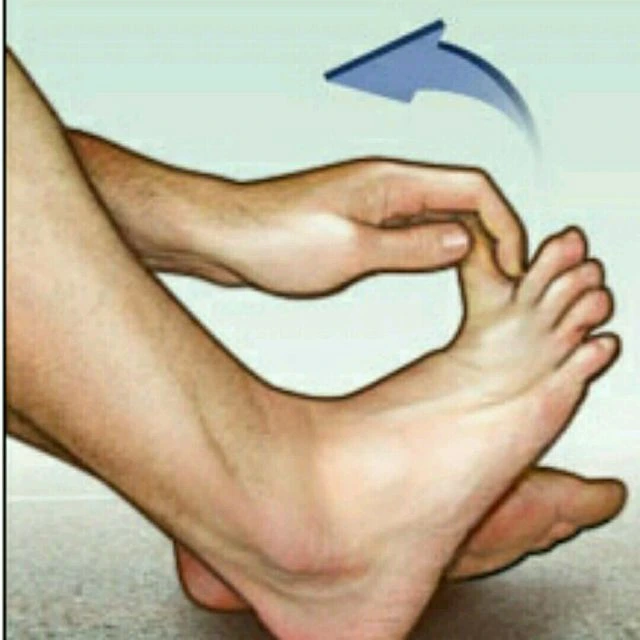
- Start with sitting or standing with your feet on the floor.
- Lift the toes off the ground, keeping the heels in place.
- As widely apart as you can, spread your toes.
- After a brief period of holding the stretch, release the toes and return to the original position.
- Repeat this exercise several times.
Toe curls:
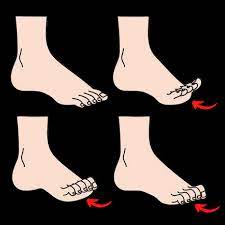
- Start with sitting or standing with your feet on the floor.
- Bend the toes down and grab the floor with them.
- Maintain this position for a few seconds, then release and straighten the toes.
- Repeat the twisting motion several times.
Foot tapping:
- Start with Sitting comfortably in a chair with the feet on the floor.
- Lift the toes off the ground, keeping the heels in place.
- Alternate tapping the toes on the floor, starting with the big toe and working the way down to the little toe.
- Keep tapping the toes repeatedly.
Ankle circles:
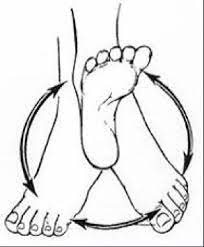
- Start with sitting in a chair or lying on the back with the legs extended.
- Lift one leg off the ground and rotate the ankle in a circular motion.
- Do several rounds in one direction, then change and rotate the ankle in the opposite direction.
- Repeat the exercise with the opposite leg 10 times.
Arch Strengthening:

- Start with sitting or standing with your feet on the floor.
- Slowly lift the arches of your feet off the ground to keep your balance on the balls of the feet and heels.
- Maintain this position for a few seconds and then lower the arches back down.
- Repeat the exercise several times.
Marble collection:

- Put some marbles or small objects on the floor in front of you.
- Use the toes to pick up one marble at a time and place it in a nearby container.
- Mark picks up the marbles until they are all in the container.
- This exercise improves toe dexterity and strength.
- Make sure to perform these exercises in a controlled manner and stop if a person experience pain or discomfort.
- Begin with a few repetitions and slowly raise them as the leg and toe strength improves.
- If a person has specific foot problems or concerns, it’s always a sound idea to consult a doctor or physical therapist before starting a new exercise routine.
Stretching exercises
Stretching the muscles and ligaments in your feet and toes can help improve flexibility, reduce stiffness, and maintain overall foot health. Here are some effective stretching exercises for your feet and toes:
Toe extension:
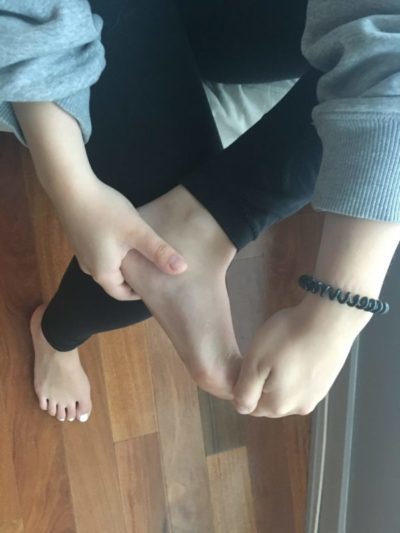
- Start with Sitting comfortably in a chair with the feet on the floor.
- Lift the toes off the ground and stretch them upwards, as if trying to direct them towards the knees.
- Maintain this position for 10-15 seconds.
- Relax and lower the toes back to the starting position.
- Repeat the stretch several times.
Toe Flexor Stretch:

- Start with Sitting comfortably in a chair with the feet on the floor.
- Put a thick rubber band or resistance band around all of the toes.
- Spread the toes as wide as possible so the resistance band doesn’t.
- Maintain this position for 10-15 seconds.
- Release the tension on the band and relax the toes.
- Repeat the stretch several times.
Plantar fascia stretching:
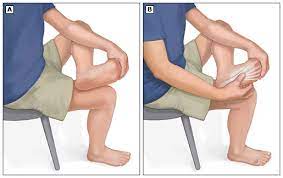
- Start with sitting in a chair and cross one leg over the opposite one.
- To stretch the calf, slowly pull the toes back with the hand.
- Maintain the stretch for 20-30 seconds.
- Change the legs and repeat the stretch with the opposite leg.
Calf Stretch:
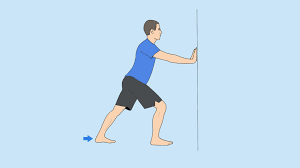
- Begin by Standing facing a wall about an arm’s length away.
- Place the hands on the wall at shoulder height and step the foot back.
- Maintain the other leg straight and the front knee slightly bent.
- Lean forward against the wall and feel the stretch in the calf of the back leg.
- Maintain the stretch for 20-30 seconds.
- Repeat the stretch on the opposite side.
Stretch the toes with a towel:

- Start with Sitting on the floor with the legs straight out in front of you.
- Put the towel around the toes and slowly pull it back to extend the toes towards you.
- Maintain the stretch for 10-20 seconds.
- Release the tension from the towel and relax the toes.
- Repeat the stretch 3 times.
Achilles tendon stretch:

- Start with standing against a wall with both hands against it.
- Step one foot back and keep the back leg straight.
- To stretch the Achilles tendon, bend the front knee slightly and press the back heel to the floor. Hold the stretch for 20-30 seconds.
- Change your legs and repeat the stretch on the other side.
- Do these stretches carefully and gradually.
- Avoid forcing your leg into an uncomfortable position and stop if you feel pain.
If you have problems or concerns about your feet, consider consulting a doctor or physical therapist before starting a new exercise routine. They can provide personal guidance and ensure that the exercises are safe and appropriate for your needs.
Manual therapy techniques:
A physical therapist can use hands-on techniques to gently mobilize and manipulate the joints of the affected toe. These techniques can help improve joint mobility and relieve stiffness.
Ultrasound therapy:
This therapy uses sound waves to promote tissue healing and reduce inflammation. It can be helpful in reducing the pain and swelling associated with the hammer toe.
Taping and Padding:
A physical therapist can tape or step the injured toe to straighten it and reduce pressure on the deformed joint. Taping can also provide support and stability during movement.
Gait Analysis:
- A physical therapist can assess a patient’s gait (gait pattern) to identify abnormalities or compensatory movements caused by the hammer toe.
- Based on the analysis, they can make recommendations to improve walking mechanics.
Advice on Shoes:
- Physiotherapists can advise patients on the correct choice of shoes to reduce hammer toe deformities and reduce pressure on the toes.
- They may recommend shoes with a wide toe and low heel.
Custom orthotics:
In some cases, custom orthotics may be recommended to provide additional support and adjust the foot, reducing stress on the toes.
Patient education:
Physical therapists can educate patients about their condition, symptom management, and self-care techniques to prevent a hammertoe from getting worse.
- It is important to note that while physical therapy can be helpful in treating hammer toe, it may not completely correct the underlying structural deformity.
- In more severe cases, or when conservative measures do not provide adequate relief, a surgical procedure may be necessary to realize the joints of the toe.
- To achieve the best result, the physiotherapy treatment plan must be prepared according to the special needs and conditions of the person.
- It is important to consult with a qualified physical therapist who can perform a thorough evaluation and create an appropriate treatment program for hammertoes.
FAQ
The most common cause of hammer toe is wearing shoes that are short, tight, and too tight. The toe is moved into a bent position. The muscles and tendons of the toe contract and shorten.
A person can stretch muscles and tendons to reduce cramps and straighten their toes. If the toe also rubs against the bottom of the shoe, you can also use small pads available at most pharmacies to cover and protect the toe.
If a person has a hammer toe, there are conservative treatments that may help relieve pain and improve flexibility without surgery. These include exercises, shoe inserts, and shoe changes. If these treatments do not help, surgery may be necessary to correct the deformity.
This deformity can cause pain and difficulty walking, and the joint can develop a corn or callus. Joint stiffness, pain at the top of the bent toe, and swelling are some of the symptoms of hammertoes. If you have symptoms, contact your doctor or podiatrist as soon as possible.
Diabetes and hammertoe
As with many diabetic foot problems, the hammer toe is caused by decreased blood flow and nerve damage. Diabetic neuropathy of the feet increases the risk of hammer toe. In the early stages of diabetic neuropathy, the nerves in the feet are damaged and cause numbness, tingling, and pain.

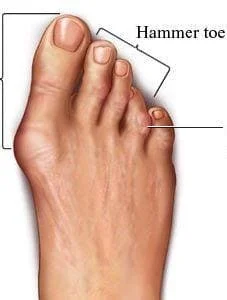
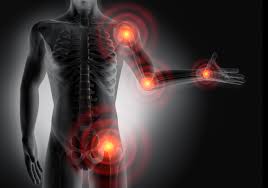

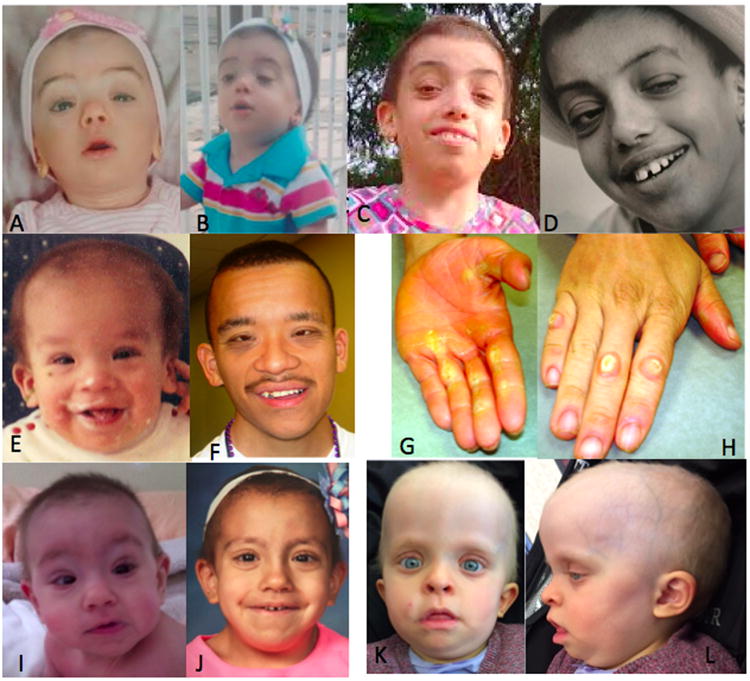
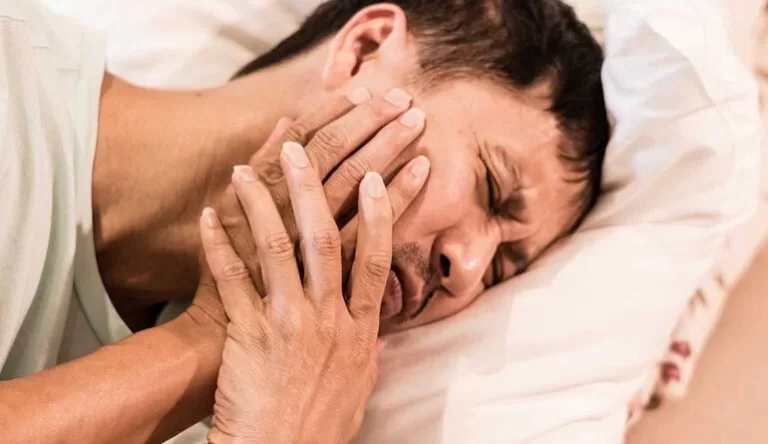
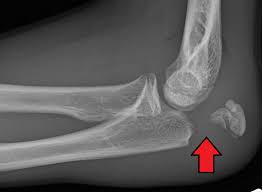

One Comment